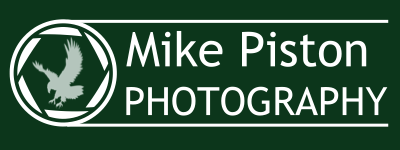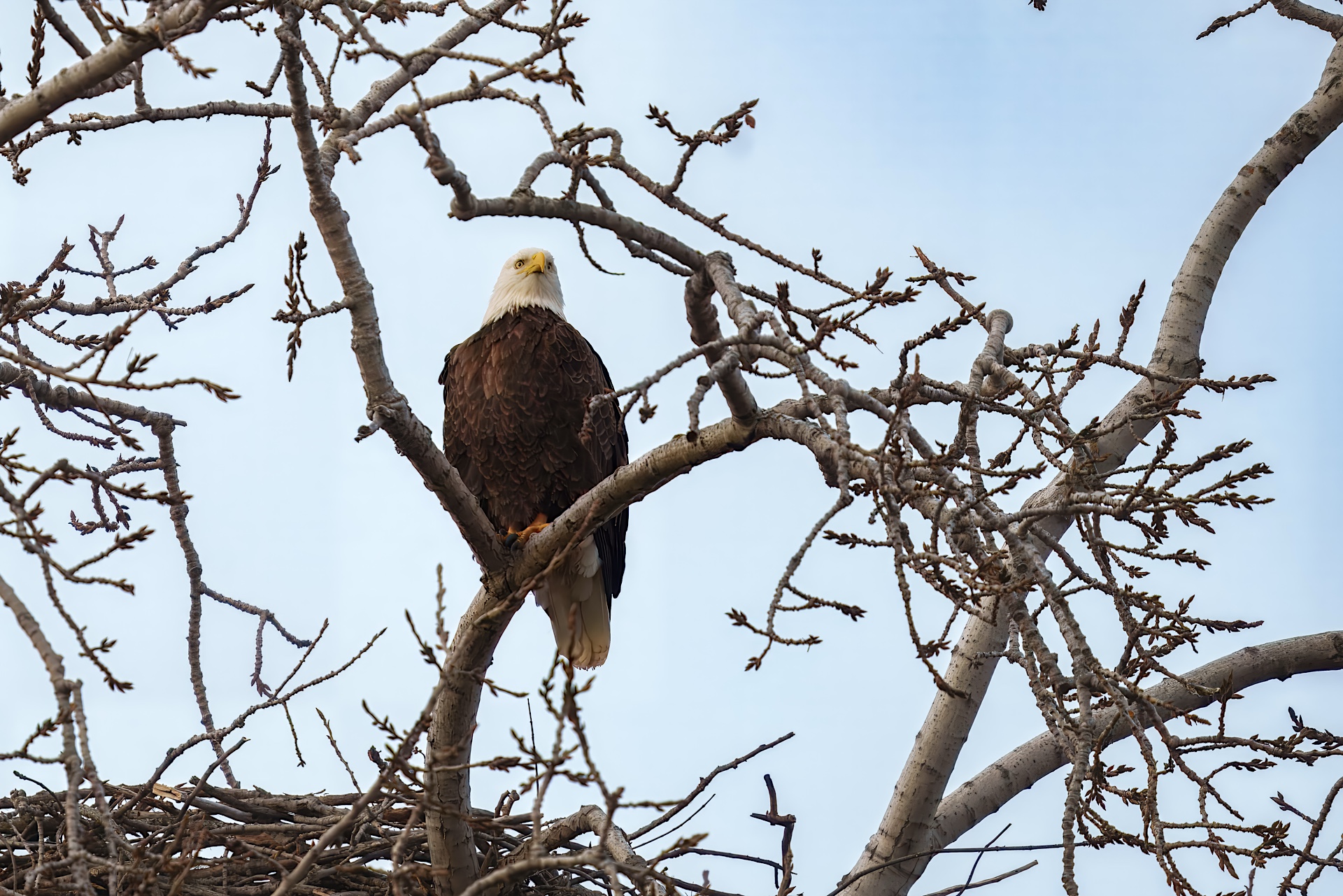Introduction – Full Frame or Crop Sensor Camera?
Are you starting bird photography and wondering whether to invest in a crop or full-frame sensor camera? Below, I’ve outlined my experiences photographing birds with both types of cameras. Both sensors offer pluses and minuses for bird photography, with the crop sensor offering more “reach” and the full-frame sensor being better in low-light situations.
I Found Tiny Camera Sensors Don’t Work For Bird Photography
I used a point-and-shoot camera (Sony DSC-HX99) with a 720mm zoom lens when I started taking bird pictures. After using it for a while, I wasn’t pleased with the quality of the images. The small sensor size (1/2.3 inch) was great for the “zoom” capability but bad for resolution, especially in low light.
My Move To a Sony a6700 Camera
I did a lot of research, and after trying two more point-and-shoot cameras (Canon SX740 HS and Lumix DC-ZS80), I decided the small sensor size was too limiting for what I wanted to accomplish. I sold those cameras and researched further, buying a Sony a6700 camera. The Sony a6700 has a “micro 4:3” 26-megapixel sensor. I also purchased a Sigma 150mm to 600mm zoom lens for the camera.
The Sony a6700 Camera’s APS-C Sensor
One of the reasons I purchased the Sony a6700 is because of the “crop sensor.” The sensor size is 15.5mm x 23mm, and the effective resolution is 26 megapixels. This sensor is smaller than a full-frame digital camera sensor, which is 24mm x 36mm. Because the a6700 sensor size is smaller, it is known as a “crop sensor.” A “crop factor” is applied to the magnification of full-frame lenses used on the camera. In the case of the a6700, the crop factor is 1.5, which gives my Sigma lens an effective maximum focal length of 600mm x 1.5 or 900mm. My explanation is simplistic, but we’ll go with it for now. The bottom line is the a6700 gave me a bit more “reach” when taking pictures of birds.
The Sony a6700 was Great For About 85% of my Bird Photography
I was pleased with the results of this equipment, taking thousands of pictures of birds and scenery. The weakness seemed to be in low light since the maximum aperture of the Sigma lens and the smaller sensor size of the a6700 made it challenging to take pictures on very overcast days or in the woods where there is lower light. Without increasing the ISO range (light sensitivity of the sensor) very high, the shutter speed was too low to give me what I wanted, and the images had a lot of noise. Still, the camera was great for about 85% of the picture-taking situations.
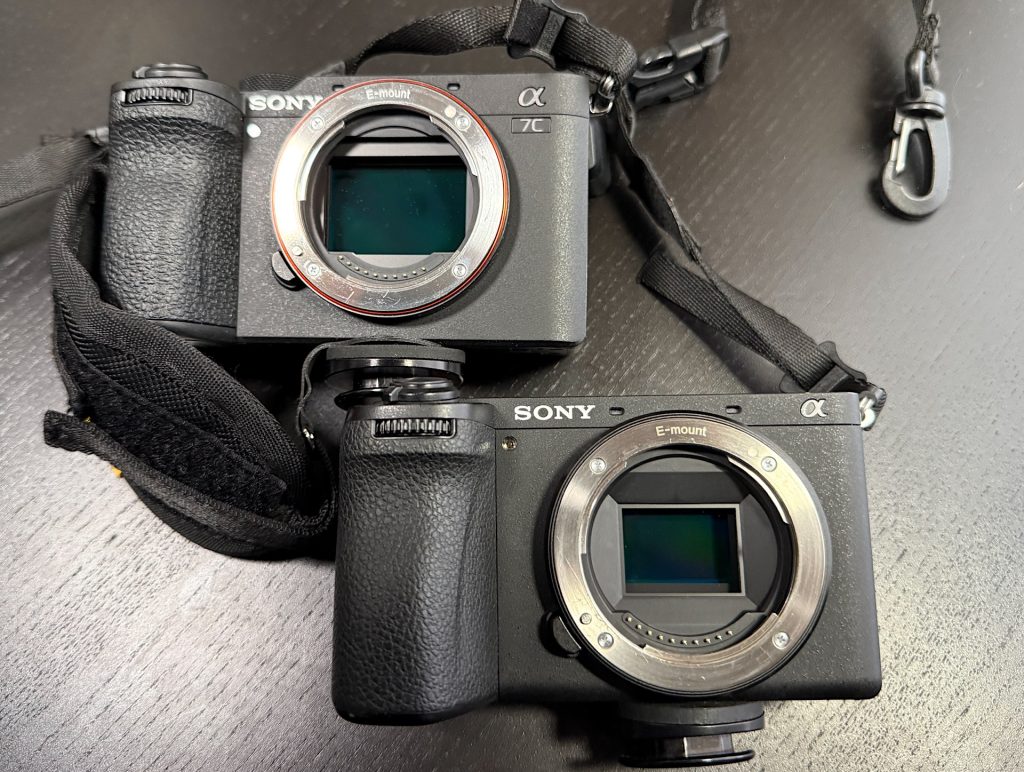
Comparison of the sensor size between the Sony a7c II (top) and the Sony a6700 (bottom)
Adding a Full Frame Sensor Sony a7cII
After using the Sony a6700 for a year, I invested in a second, full-frame sensor camera because I started taking more landscape pictures. I decided on the Sony A7c II camera because its size and controls are very similar to those of the Sony A700. It has a 24mm x 36mm sensor with a 32.7-megapixel resolution. Of course, in addition to landscapes, I also wanted to try this camera along with my Sigma 150mm to 600mm zoom lens for bird photography.
The Benefits of A Full Camera For Bird Photography
I tested the new Sony a7c II in many situations when photographing birds. I found the following:
- The difference in resolution was significant: the size of the raw files from the Sony A7c II is double that of the Sony A6700. There is definitely a lot more data being saved in each image.
- Performance in low light was significantly better. In lower light, I can use higher shutter speeds and smaller aperture settings without blowing up the ISO.
- Combining more picture data and better low-light performance makes the editing workflow easier. There is also much more flexibility in cropping, noise reduction, and sharpening images.
But Using a Full Frame Camera For Bird Photography Has a Downside versus a Crop Sensor
As you might expect, that is the lens’s “reach” on the Sony A7c II compared to the lens on the Sony A6700. You are more limited in the bird pictures you can take with the full-frame sensor camera because you need to be closer to the bird.
Below, I’ve included some examples of a picture I took of an eagle perched near its nest. You can see the difference in magnification between the full frame and the crop sensor.
Do the extra pixels and light sensitivity provided by the full-frame sensor offset the difference in magnification? In many cases, they do, especially in low-light situations. You get a better raw image and can do more cropping than a crop-sensor image. However, comparing the pictures I’ve taken during bright sunshine or even golden hour shows there’s not as much difference as expected between a full frame and crop sensor.
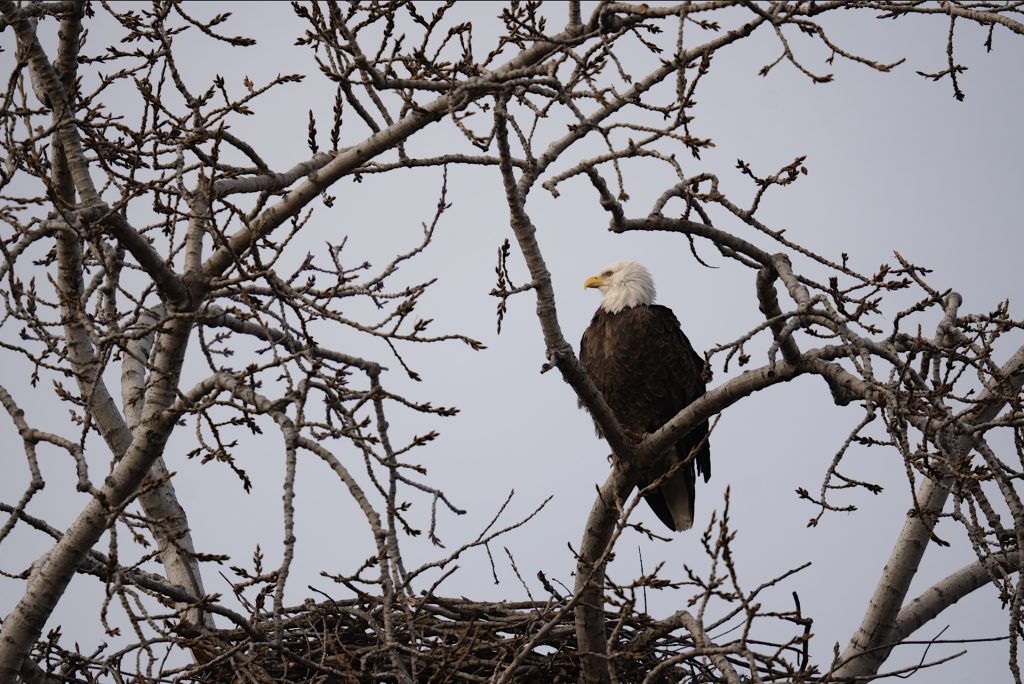
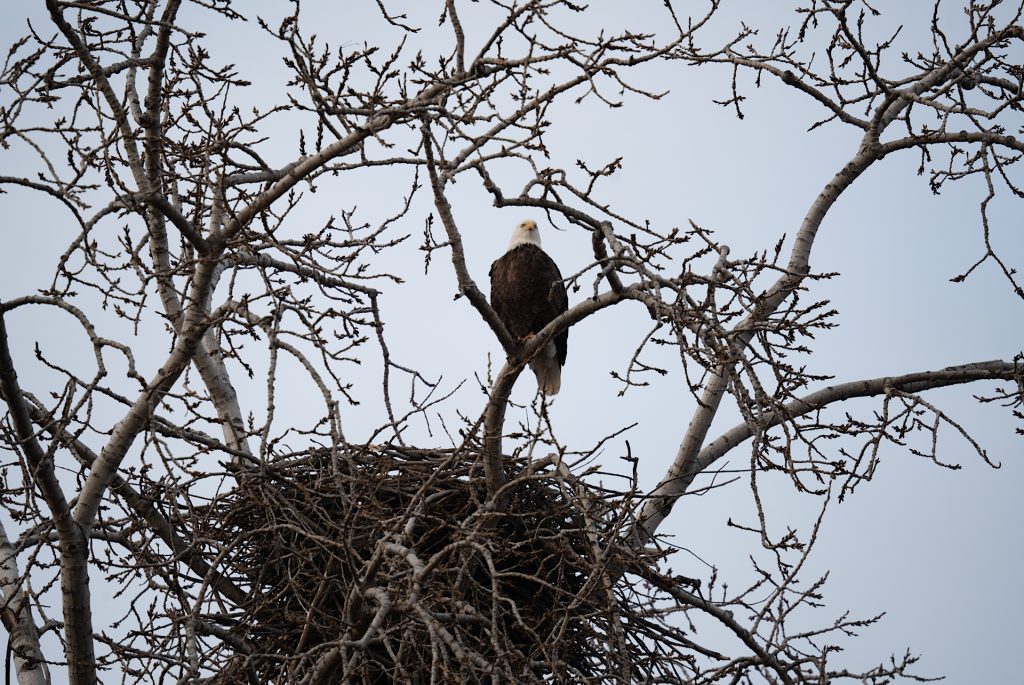
Bald Eagle shot using a Sony a6700 (top) and Sony a7c II (bottom) showing the imact of crop factor vs a full frame sensor
So, What Am I Doing Now For Bird Photography?
I use both cameras, but I use the Sony A6700 when taking pictures in better lighting or when I know the birds will be far away, such as the owls at Shawnangunk National Grasslands. I use the Sony A7c II for lower-light days or when I think the extra resolution and sensitivity will help.
I’m fortunate to own both cameras and enjoy experimenting with each on my bird photography outings. However, if I could take only one camera, I would choose the Sony A6700. I like its extra reach, and I’ve gotten some great shots.
What do you think?
